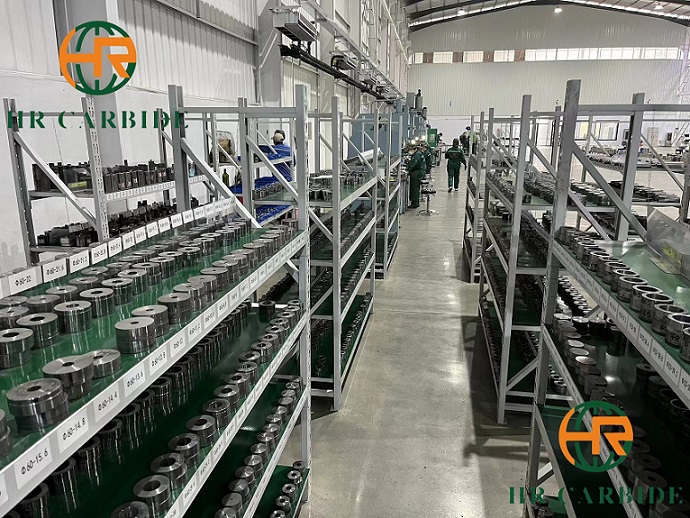Tungsten carbide generally requires high combined carbon (≥6.07%) and free carbon (≤0.05%). The total carbon is determined by the production process and use scope of the cemented carbide. Under normal circumstances, the total carbon used in WC for vacuum sintering in the paraffin process is mainly determined by the combined oxygen content in the compact before sintering. To contain one part of oxygen, 0.75 parts of carbon must be added, that is, WC total carbon = 6.13% + oxygen content % × 0.75 (assuming that the sintering furnace is a neutral atmosphere, in fact, most vacuum furnaces are carburizing atmospheres, and the total WC carbon used is less than the calculated value). At present, the total carbon content of WC in my country is roughly divided into three types: the total carbon of WC for vacuum sintering in paraffin process is about 6.18±0.03% (free carbon will increase).
The total carbon content of WC for hydrogen sintering in paraffin process is 6.13±0.03%. Total carbon of WC for hydrogen sintering in rubber process = 5.90±0.03%. The above processes are sometimes interleaved, so determining the total carbon content of WC depends on the specific situation. Some minor adjustments can be made to the total WC carbon used in alloys with different application ranges, different Co (cobalt) contents, and different grain sizes. For low-cobalt alloys, tungsten carbide with higher total carbon can be used, while for high-cobalt alloys, tungsten carbide with lower total carbon can be used.
When manufacturing cemented carbide, the particle size of the raw material powder selected is between 1 and 2 microns, and the purity is very high. The raw materials are batched according to the prescribed composition ratio, add alcohol or other media, and grind them in a wet ball mill to fully mix and pulverize them. After drying and sieving, a molding agent such as wax or glue is added, and then dried and passed. Sieve the mixture. Then, the mixture is granulated, pressed, and heated to close to the melting point of the bonding metal (1300 to 1500°C). The hardened phase and the bonding metal form a eutectic alloy. After cooling, the hardened phase is distributed in a grid composed of bonding metal, and is closely connected with each other to form a solid whole. The hardness of cemented carbide depends on the hardening phase content and grain size. That is, the higher the hardening phase content and the finer the grain size, the greater the hardness. The toughness of cemented carbide is determined by the bonding metal. The higher the bonding metal content, the greater the flexural strength.
Post time: May-17-2024











